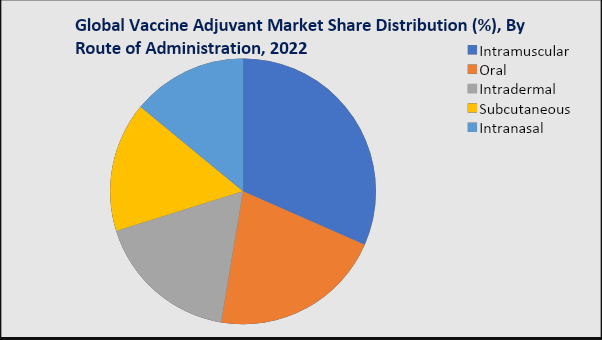Cancer & Infectious Disease Focus Fuels Adjuvant R&D Boom

Valued at US $3.81 billion in 2024, the Vaccine Adjuvants Market is gaining prominence in global health. With a projected CAGR of 4.3%, the market is on track to reach US $4.86 billion by 2030, powered by advancements in vaccine technologies and a growing emphasis on public immunization.
View the Executive Summary Free
Market Drivers & Growth Catalysts
1. Rising Infectious Disease Burden
Recurring and emergent infectious diseases—from influenza to new COVID variants and mosquito-borne illnesses—have made strong, efficient vaccines a necessity. Adjuvants, which amplify the immune response, have become central to the development of next-gen vaccines that offer stronger, longer-lasting protection with fewer doses.
2. Aging Global Population
An aging population, particularly in countries like Japan where over 29% of citizens are aged 65 and above, presents unique immunization challenges. Adjuvants are essential in enhancing immune responses among the elderly, making vaccines more effective for this at-risk demographic.
3. Expanding Applications in Oncology and Chronic Diseases
Beyond infectious diseases, the growing demand for therapeutic vaccines—especially for cancer, autoimmune conditions, and diabetes—is driving innovation in adjuvant formulations. These agents enable targeted immune system activation, offering promise in disease management and potential cures.
4. Breakthroughs in Adjuvant Technology
The industry is witnessing a shift from traditional alum-based adjuvants toward novel, molecularly defined compounds such as lipid A ***gs, nanoparticles, and saponin-based platforms like QS‑21 and Matrix‑M. These advancements provide enhanced safety, stability, and efficacy profiles, accelerating clinical trials and regulatory approvals.
5. Strong Government & Institutional Support
Globally, governments and health agencies are investing heavily in vaccine R&D, including funding for adjuvant development. Strategic reserves, faster approval pipelines, and defense production initiatives are fueling market expansion and ensuring supply chain security for essential adjuvant components.
6. Growing Global Collaborations
Collaborations between leading pharma and biotech players—such as GSK, Novavax, Sanofi, CSL, and Merck—are helping to fast-track development timelines for cutting-edge adjuvant platforms. This synergy is accelerating innovation and pushing new vaccines into clinical use faster than ever before.
Regional Market Highlights
United States
The U.S. continues to lead the global market, accounting for approximately $1.34 billion in 2024, projected to reach $1.67 billion by 2030. Demand is driven by its focus on pandemic preparedness, increasing cancer vaccine development, and consistent public sector ***. Nanoparticle and saponin-based adjuvants are gaining preference over older systems, reflecting a shift toward precision immunology.
Japan
Japan’s vaccine adjuvants market, valued at $245.6 million in 2024, is expected to grow at a 3.4% CAGR, reaching $297.9 million by 2030. Japan’s super-aging society fuels demand for more effective adult immunization against diseases like influenza and pneumonia. Japanese biotech firms are also exploring adjuvants for new-generation mRNA and protein subunit vaccines.
Asia-Pacific
The Asia-Pacific market is witnessing a remarkable boom, growing at an estimated 14.6% CAGR from 2022 to 2030. From $518 million in 2022, the region is projected to cross $1.55 billion by 2030. China and India are the growth engines, driven by expanding local vaccine manufacturing capacity, government funding, and rising infectious disease awareness.
Industry Trends
In the U.S.:
-
The U.S. FDA has recently approved several vaccines with novel adjuvants, including Matrix‑M and AS‑01 formulations for COVID-19 and shingles, respectively.
-
Biotech firms are exploring adjuvanted mRNA vaccines for flu and RSV, which offer better immune profiles than traditional vaccines.
-
The Defense Production Act has been invoked to ensure domestic manufacturing of strategic adjuvants like QS‑21.
In Japan:
-
Japan’s Ministry of Health has approved several adjuvanted vaccines tailored to its aging population, emphasizing preventative care in senior healthcare.
-
Novel formulations based on mRNA and protein subunit platforms, combined with nanoparticle adjuvants, are under trial.
-
Increased collaboration between Japanese pharma and global companies aims to produce adjuvants domestically and reduce import reliance.
Growth Opportunities
Synthetic Adjuvants: Next-gen synthetic formulations are becoming the gold standard due to better control over immune responses and manufacturing consistency.
Cancer Vaccines: Adjuvants play a vital role in oncology immunotherapy. The increase in cancer prevalence will continue to drive this sub-segment.
Elderly Vaccine Formulations: With the global population aged 65+ projected to double by 2050, vaccine formulations enhanced with adjuvants for seniors represent a massive opportunity.
Mucosal Vaccines: Research into intranasal and oral vaccine delivery, made effective with adjuvants, opens doors for needle-free, user-friendly immunization.
Public Health Preparedness: With the threat of future pandemics looming, governments are stockpiling adjuvant materials and supporting domestic production to avoid supply chain disruptions.
Market Outlook
The Vaccine Adjuvants Market is expected to reach $6 billion by 2034, driven by continuous innovation, global immunization drives, and unmet healthcare needs. As the industry evolves, the importance of safe, scalable, and responsive adjuvant systems cannot be overstated. Their impact on disease prevention, health equity, and vaccine accessibility places them at the core of 21st-century public health strategy.
About
Vaccine adjuvants are biologically active substances that are added to vaccines to improve their effectiveness. They function by stimulating stronger immune responses, reducing antigen requirements, and ensuring longer-term immunity. The market includes a variety of product types including:
-
Particulate Adjuvants (e.g., alum, liposomes, nanoparticles)
-
Emulsion-based Adjuvants (e.g., MF59, AS03)
-
Toll-Like Receptor Agonists (e.g., CpG 1018)
-
Saponin-based Platforms (e.g., QS‑21, Matrix‑M)
- Art
- Causes
- Crafts
- Dance
- Drinks
- Film
- Fitness
- Food
- Games
- Gardening
- Health
- Home
- Literature
- Music
- Networking
- Other
- Party
- Religion
- Shopping
- Sports
- Theater
- Wellness


